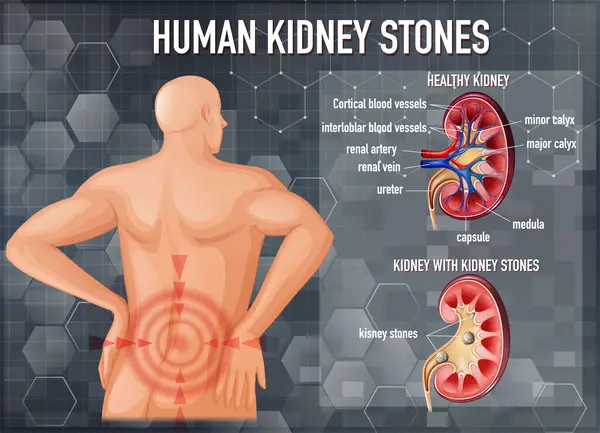Inflammatory bowel disease (IBD) refers to two main conditions – Crohn’s disease and ulcerative colitis. Both cause chronic inflammation of the gastrointestinal tract. However, Crohn’s can affect any part of the digestive system, while ulcerative colitis only affects the colon and rectum. People with IBD, especially Crohn’s disease, have an increased risk of developing kidney stones, compared to the general population.
Kidney stones form when certain chemicals become concentrated enough in the urine to crystallize. Most stones contain calcium combines with oxalate or phosphate. Oxalate – a derivative of oxalic acid- can bind minerals like calcium which forms kidney stones. Oxalate is the most common type of kidney stone. Percentages given vary between 60 – 80% of all stones are kidney stones due to oxalates.
Oxalates are found in many foods
Oxalates are compounds found naturally in many foods, including leafy greens, nuts, fruits, vegetables, chocolate and tea. Our body also produces oxalates daily. Normally they trave through the digestive tract unabsorbed and leave the body one’s stool.
For people with IBD, particularly Crohn’s disease, occurrence of having a re-section surgery, inflammation as well as malabsorption can lead to excessive absorption of oxalates in the bloodstream.

. The biggest preventative measure to help reduce kidney stone risk is adequate hydration. Drinking sufficient water helps to dilute urine and prevent crystal formation.
How much is enough water to help reduce chances of kidney stones? From the Cleveland Clinic web site, when talking about daily water consumption, the site refers to The National Academies of Science, Engineering and Medicine and it’s recommendation:
125 ounces (3.7 liters) for men
91 ounces (2.7 liters) for women
But that’s is not the final word, rather just a beginning regarding adequate daily water consumption. Factors such as physical activity, metabolism, as well as general health all are considerations to how much water to drink daily. Keep in mind that 20% of our daily fluid intake comes from water that’s already in food.
Crohn’s Disease and Kidney Stones
For people with Crohn’s disease, inflammation, surgery, strictures or even just malabsorption, there is a potential for excessive absorption of oxalates into the bloodstream. This may occur as resection surgery to remove parts of the small intestine or colon can reduce the area available for proper nutrients and oxalate absorption through the digestive tract. Inflammation along the GI tract impairs the ability to absorb water and filter waste, leading to diarrhea and higher oxalate absorption. Instead of being eliminated through the GI tract, oxalates may end up in the blood system. The kidneys filter oxalates out of the blood, but too much oxalate in the kidneys raises the risk of stones.
Crohn’s Disease and Ulcerative Colitis
In addition to inadequate hydration, IBD medications may reduce stomach acid which influences gut bacteria and absorption of oxalates and may increase kidney stone risk. Early kidney stone detection is important. Monitoring for symptoms like pain while urinating, blood in urine, abdominal pain, nausea and vomiting are all reasons to discuss with your health care provider.
As always, all of the information in this article is informative only, and is not to be taken as medical advice. Please see your medical doctor for formal advice.
While all IBD patients have increased stone risk, those with Crohn’s disease, a history of strictures or resection surgery, chronic diarrhea or malabsorption problems tens to face the highest risk. Managing these issues can help reduce stone formation.
Barry Schustermann
Follow me on X @BarrySchust
Follow me on Facebook @Barry Schustermann



